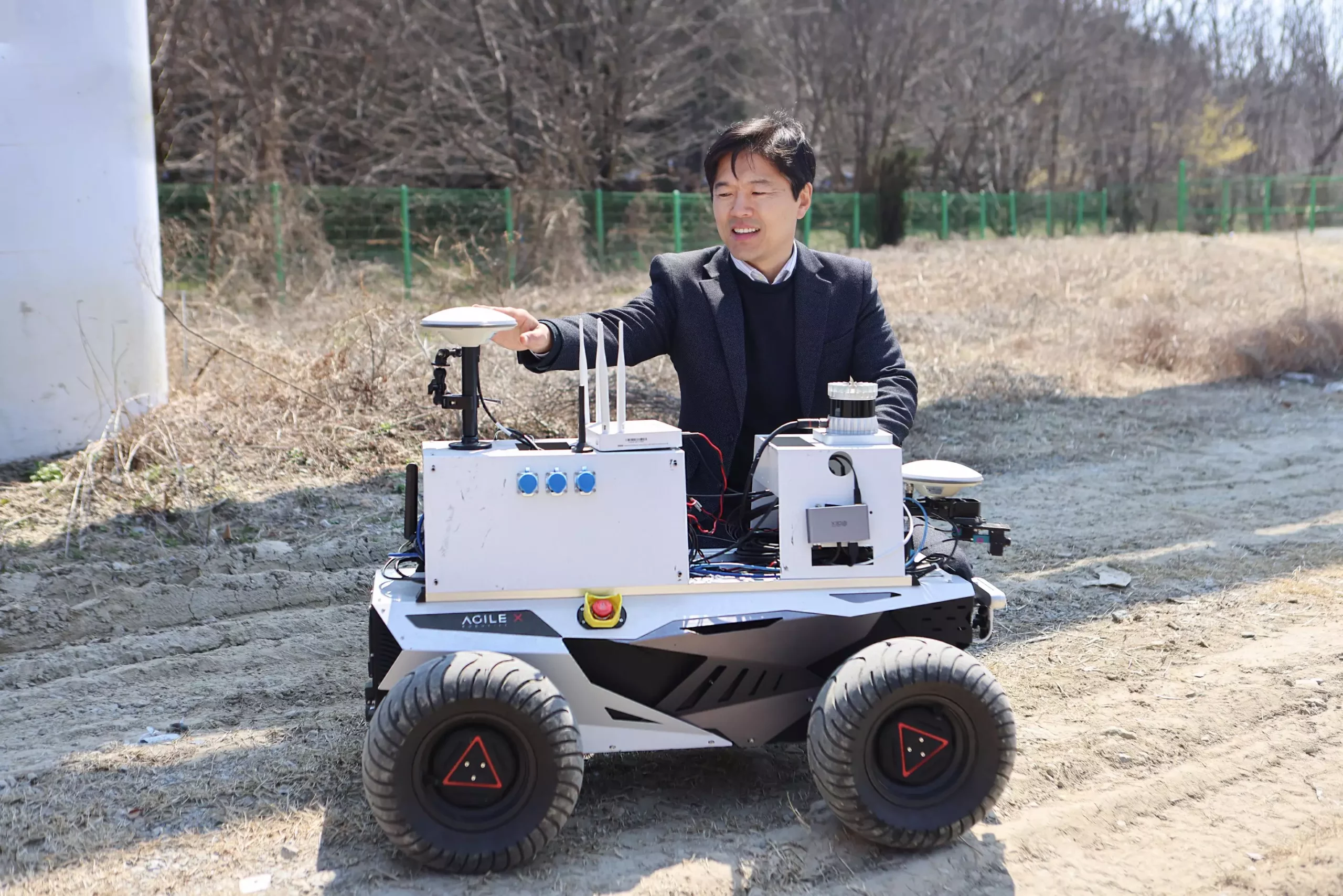Off-road environment recognition technologies have seen significant advancements in Korea, particularly in detecting and removing extraneous substances such as dust, mud, snow, or rain during off-road autonomous driving of various vehicles. These technologies have the potential to revolutionize industrial machinery and military self-driving cars, providing a safer and more efficient working environment for operators.
The research team at the Korea Institute of Machinery and Materials (KIMM) led by Senior Researcher Han-Min Lee has developed a range of innovative technologies for driving in off-road environments. These include sensor protection and cleaning technology, sensor signal correction technology, and drivable area recognition technology. These advancements have been transferred to relevant corporations for further implementation and testing.
One of the noteworthy technologies developed by KIMM is the “sensor protection and cleaning module.” This module allows for the spraying of detergents on muddy water or mud that may splash onto sensors during off-road self-driving. By utilizing a wiper, this technology can effectively remove contaminants in real-time, ensuring the sensors remain clear and accurate even in challenging conditions.
Another important innovation is the “sensor signal correction” technology. This technology is designed to remove small-sized extraneous substances such as dust, snow, and rain from sensor signals. By doing so, it helps to maintain stable driving conditions during off-road operations, especially in adverse weather conditions where sensor accuracy may be compromised.
The development of “drivable area estimation technology” by KIMM is aimed at enhancing obstacle detection and route planning during off-road driving. This technology can identify general obstacles, steep slopes, potholes, and bumpy roads, automatically suggesting alternative routes to avoid collisions. By recognizing a wide range of obstacles, this technology contributes to overall safety and efficiency in off-road environments.
Additionally, KIMM has introduced “driving control technology” for real-time vehicle control. By selectively employing necessary functions from the aforementioned technologies, this system ensures optimal driving performance in off-road conditions. This adaptive approach allows for efficient and safe driving, even in unpredictable environments.
The newly developed off-road environment recognition technologies have significantly improved processing speed while maintaining key performance indicators such as sensor contamination recovery rate, accuracy in sensor noise removal, and drivable area estimation accuracy. These advancements pave the way for practical implementation of these technologies in controlling off-road self-driving vehicles, offering enhanced safety and efficiency in various industries.
With these cutting-edge technologies at the forefront of off-road driving innovation, the future of autonomous and semi-autonomous vehicles in challenging environments looks promising. The relentless pursuit of excellence in technology development continues to shape the landscape of off-road driving, ensuring safer and more productive operations for operators worldwide.


Leave a Reply